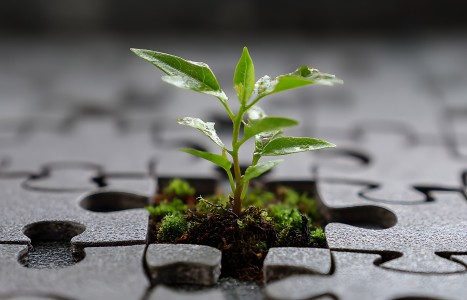When we talk about fertility, the focus is often placed on the ovaries and the uterus. Yet sperm-related factors contribute to nearly half of all cases of infertility. Whether someone is navigating fertility care alone or with a partner, and whether building a family through intercourse, IVI, IUI or IVF, it’s vital to include sperm health in the picture.
Yin and Yang Theory
The theory of yin and yang is the most fundamental concept of traditional Chinese medicine. One of the major beliefs of TCM is that all things in the universe are either yin or yang. However, there are no absolutes: nothing is ever all yin or all yang, but a balance between the two forces. For example, when day changes into night, it is an example of a yang object changing into a yin object; when winter turns into spring; it is considered a changing from yin to yang. These forces are opposite and yet complementary, and share an interdependent relationship without yin, there would be no yang, and without yang, no yin.
Yang is generally associated with items or concepts that are bright, warm, and in motion. Yin is generally associated with objects or ideas that are dark, still and cold. Any given frame of reference can be divided into opposite factors, i.e. a yin side and a yang side. For instance, a human body can be divided into exterior and interior sections; the temperature can be divided into hot or cold; time can be divided into day or night; animals can divided into hot-blooded or cold-blooded, and so on.
The following are some of the more well-known examples of yin and yang:
| Yin | Yang |
| Female | Male |
| Night | Day |
| Moist | Dry |
| Cold | Hot |
| Winter | Summer |
| Death | Birth |
| Small | Large |
| Solid | Hollow |
The Yin-Yang Symbol
The yin-yang symbol is a representation of the philosophy of traditional Chinese medicine. The symbol consists of a circle, divided by a curved line into a black (yin) and white (yang) side. The curve symbolizes the constant change of balance between yin and yang. Each side contains a small circle of the opposite color. This demonstrates the belief that nothing is never really all yin or all yang; there is some of yang in yin, and vice-versa.
Applying Yin and Yang to Chinese Medicine
Each organ in the body has an element of yin and yang within it. Some organs, such as the liver, are predominantly yang; others, such as the kidneys, are yin. Even though an organ may be predominantly yin or yang in nature, the balance of yin and yang is maintained throughout the body, because the sum total of yin and yang will be in balance.
It is important to note that the body is not always in an exact balance of yin and yang. Even when the body is healthy, there may be subtle shifts from one state to the other. When a person gets angry, for instance, the yang state may dominate; when that person has calmed down and resumed to a peaceful state, yin may become dominant.
In traditional Chinese medicine, illness is believed to be caused by an imbalance of yin and yang in the body. In an excess of yin, the yang qi would be damaged, leading to the development of a cold disease. Excess of yang will likewise damage yin qi and lead to a heat disease being developed.
Basic treatment of these diseases is aimed at replenishing depleted yin or yang, and it is through this process that the balance of yin and yang is re-established. Traditional Chinese medicine practitioners attempt to determine the exact nature of the imbalance, then correct it through a variety of approaches, including acupuncture, herbal remedies, exercise, and changes in diet and lifestyle. As the balance is restored in the body, so is the person's health.


